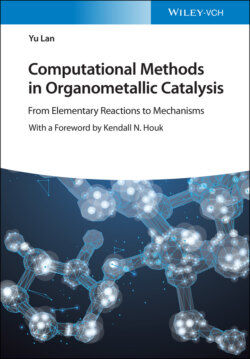Читать книгу Computational Methods in Organometallic Catalysis - Yu Lan - Страница 33
2.3.5 Correlation‐Consistent Basis Sets
ОглавлениеThe split‐valence basis sets developed by Pople are widely used. The correlation‐consistent basis sets developed by Dunning are popular alternatives. The split‐valence basis sets were constructed by minimizing the energy of the atom at the HF level with respect to the contraction coefficients and exponents. The correlation‐consistent basis sets were constructed to extract the maximum electron correlation energy for each atom. The correlation‐consistent basis sets are designated as “cc‐pVNZ,” to be read as correlation‐consistent polarized split valence N‐zeta, where N designates the degree to which the valence space is split [73–76]. The “cc‐p,” stands for “correlation consistent polarized” and the “V” indicates they are valence only basis sets. As N increases, the number of polarization functions also increases. So, for example, the cc‐pVDZ basis set for carbon is double‐zeta in the valence space and includes a single set of d functions, and the cc‐pVTZ basis set is triple‐zeta in the valence space and has two sets of d functions and a set of f functions. The addition of diffuse functions to the correlation‐consistent basis sets is designated with the prefix aug‐, as in aug‐cc‐pVTZ. Usually, the correlation‐consistent basis sets are used in post‐HF level calculations, which revealed a significantly better accuracy.
